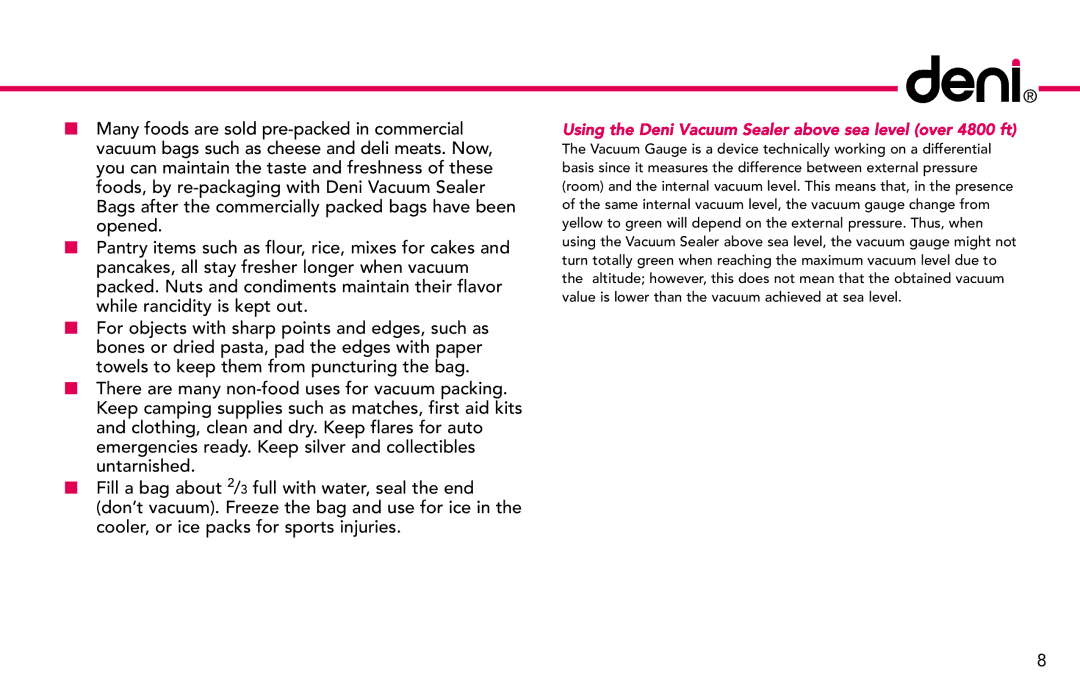
■Many foods are sold
■Pantry items such as flour, rice, mixes for cakes and pancakes, all stay fresher longer when vacuum packed. Nuts and condiments maintain their flavor while rancidity is kept out.
■For objects with sharp points and edges, such as bones or dried pasta, pad the edges with paper towels to keep them from puncturing the bag.
■There are many
■Fill a bag about 2/3 full with water, seal the end (don’t vacuum). Freeze the bag and use for ice in the cooler, or ice packs for sports injuries.
![]() ®
®
Using the Deni Vacuum Sealer above sea level (over 4800 ft)
The Vacuum Gauge is a device technically working on a differential basis since it measures the difference between external pressure (room) and the internal vacuum level. This means that, in the presence of the same internal vacuum level, the vacuum gauge change from yellow to green will depend on the external pressure. Thus, when using the Vacuum Sealer above sea level, the vacuum gauge might not turn totally green when reaching the maximum vacuum level due to the altitude; however, this does not mean that the obtained vacuum value is lower than the vacuum achieved at sea level.
8
